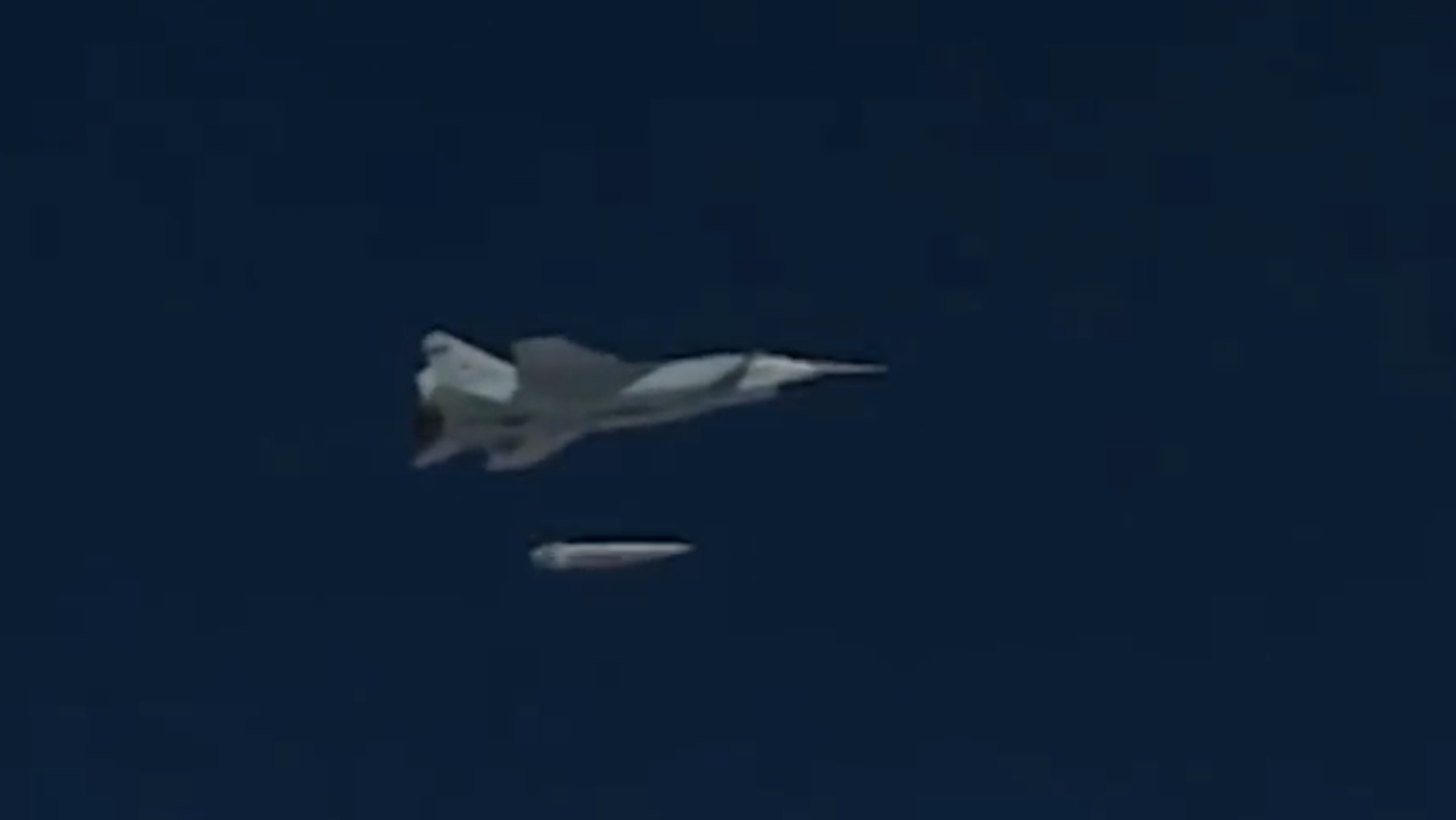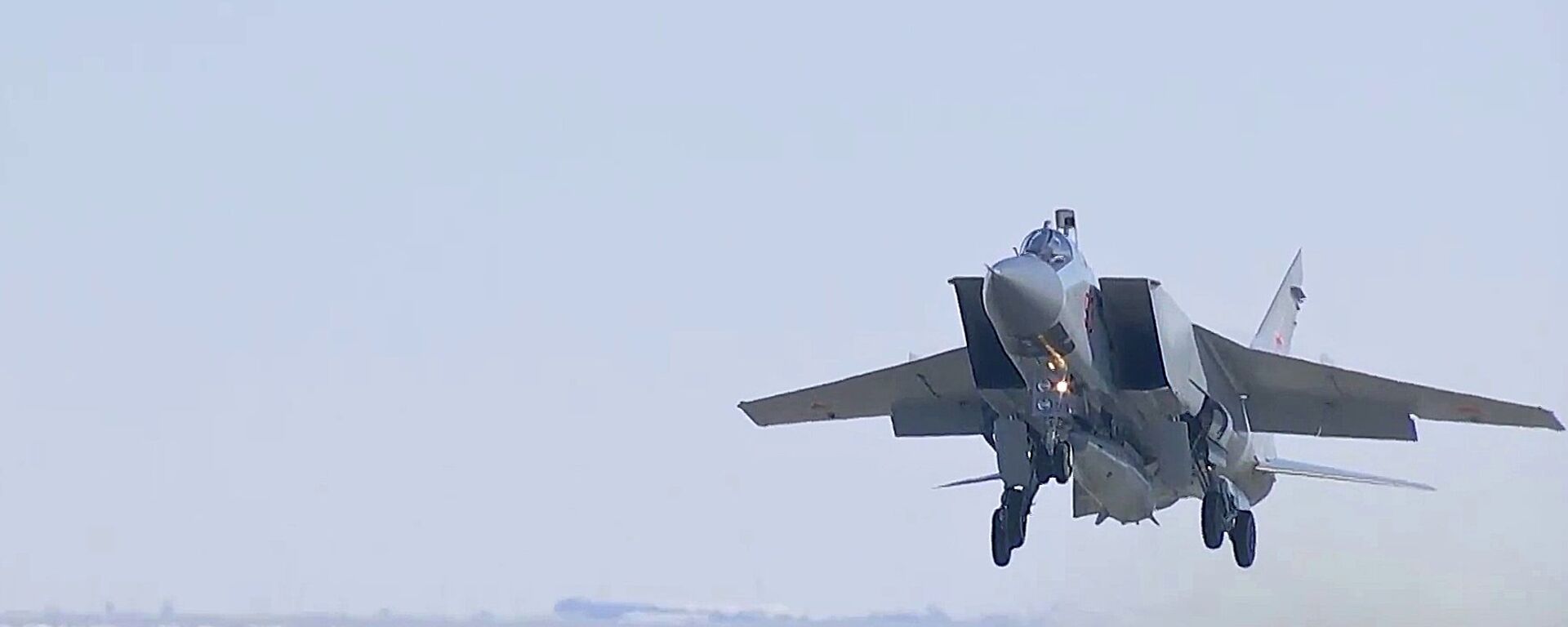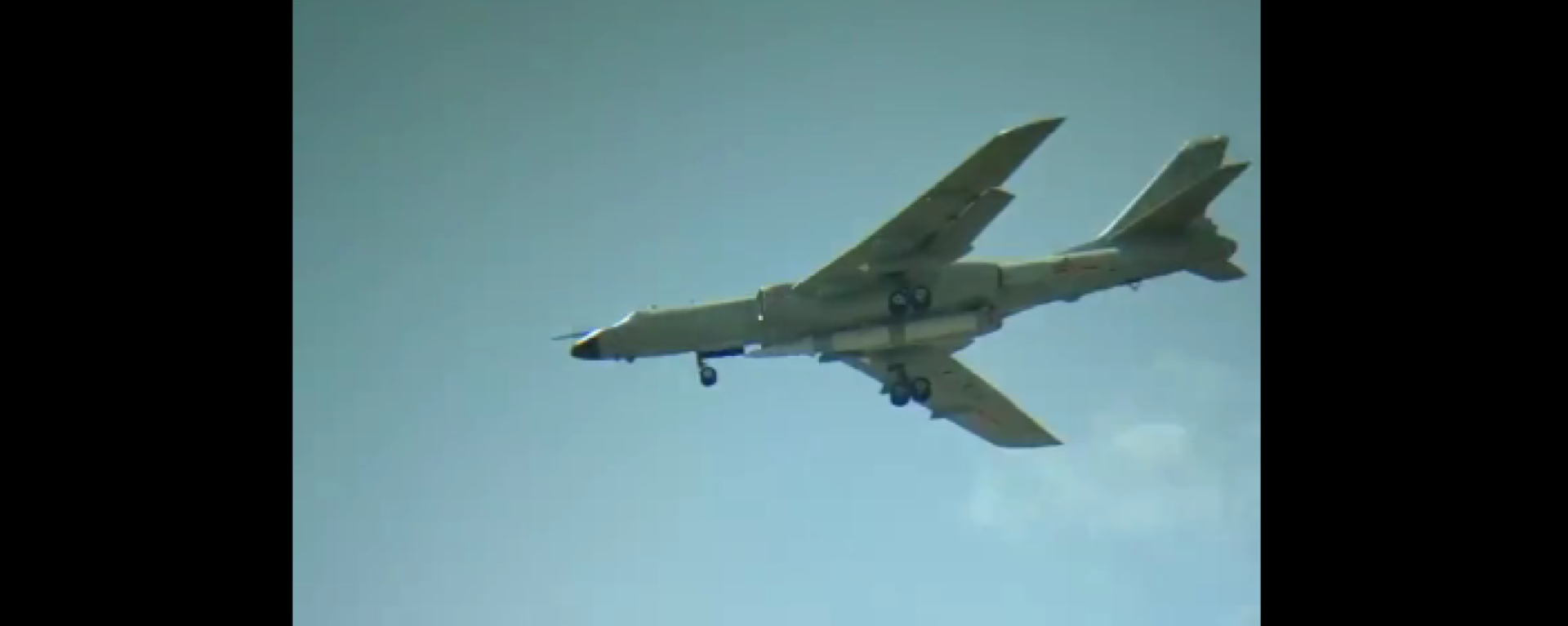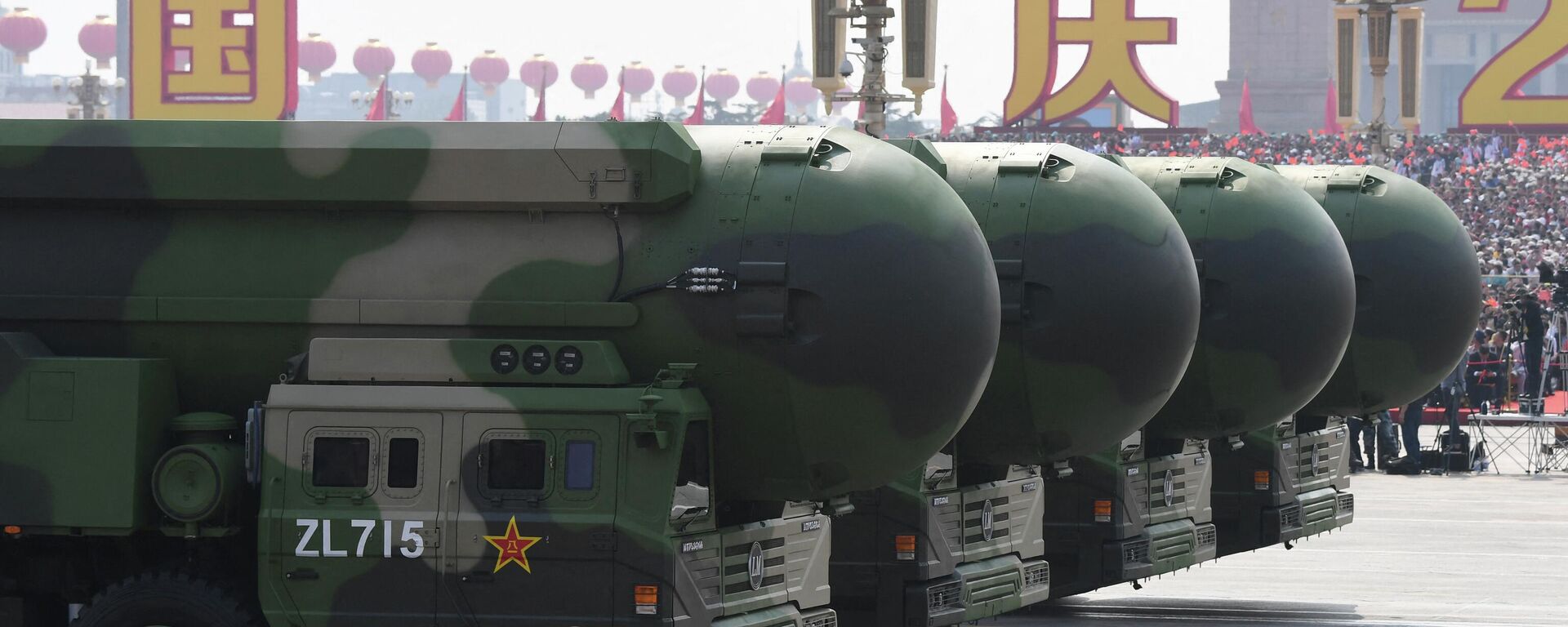https://sputnikglobe.com/20220603/russia-churning-out-hypersonic-weapons-that-threaten-our-homeland-top-us-general-says-1095974854.html
Russia Churning Out Hypersonic Weapons That ‘Threaten Our Homeland’, Top US General Says
Russia Churning Out Hypersonic Weapons That ‘Threaten Our Homeland’, Top US General Says
Sputnik International
Russia achieved hypersonic capability in late 2017 after putting the Kinzhal (‘Dagger’) nuclear-capable aero-ballistic air-to-surface missile into service... 03.06.2022, Sputnik International
2022-06-03T14:04+0000
2022-06-03T14:04+0000
2022-06-03T14:04+0000
north american aerospace defense command (norad)
us northern command (northcom)
russia
america
china
https://cdn1.img.sputnikglobe.com/img/07e6/02/13/1093175363_364:139:1673:876_1920x0_80_0_0_337ac2b59f99425ca2368db53941be48.png
US adversaries Russia, China and North Korea have accelerated the deployment of new weapons “specifically designed to threaten our homeland,” and to undermine America’s ability to “project power” abroad, General Glen D. VanHerck, commander of United States Northern Command and the North American Aerospace Defense Command has warned.VanHerck characterize Russia as the “primary military threat” to the US, and referenced Russian efforts to deploy new hypersonic and cruise missiles and other stealthy strike weapons which can evade detection and “strike targets in our homeland with multiple vectors of attack and in all domains.”VanHerck pointed to Russian plans to deploy new long-range missiles which could reach the US from both northern or southern trajectories, and said such attack vectors would deprive US leaders of the ability to respond effectively to protect government functions and order retaliatory strikes.The commander also complained about the capabilities of the Kh-102 air-launched cruise missile, which he said has a long enough range to strike the US from inside Russian airspace. “This capability challenges my ability to detect an attack and mount an effective defense,” VanHerck said.The NORTHCOM and NORAD chief also pointed to the capabilities of Russia’s submarine-based nuclear deterrent, including the Yasen-class guided missile subs that can strike “within cruise missile range of our coastlines to threaten critical infrastructure during an escalating crisis.” VanHerck expects these to be equipped with Russia’s latest hypersonic weapons in the coming years.Combined with what he said were constant “attacks” in the information space and cyber domain, including alleged attempts to “sow division” and “fan the flames of internal discord,” VanHerck grumbled that NORTHCOM was now “facing the most dynamic and strategically complex set of challenges in the history of the command.”China also has capabilities which “hold our homeland at risk in multiple domains,” and which could “complicate our decision-making and to disrupt, delay and degrade force flow in crisis and destroy our will in conflict,” the officer said, pointing to the growing numbers and increasing sophistication of the People’s Republic nuclear capabilities.VanHerck expressed particular concern over the alleged testing of a Chinese space-based fractional orbital bombardment system last July. “When fielded, China’s ICBM-class HGV [hypersonic glide vehicle] will be able to evade current ground and space-based early warning capabilities due to its low-altitude approach and ability to maneuver midcourse, which compounds the detection and warning challenges I already face from Russia’s Avangard HGV and advanced cruise missiles,” he said.VanHerck recommended additional military spending on improved sensors and weapons and updated policies to account for the new challenges.He did not specify how more funding for the US military-industrial complex, which at $801 billion in 2021 already accounted for nearly 40 percent of global military spending, would allow Washington to catch up to adversaries, who spend significantly less. Russia, for example, spent $65.9 billion on defence in 2021, equivalent to about eight percent of US defence spending, while China spent $293 billion during the same period, according to Stockholm International Peace Research Institute figures.Russia and China’s nuclear doctrines forbid the use of strategic weapons for offensive purposes, with Russia’s allowing for them to be used only in the event of an enemy nuclear attack or an act of conventional aggression so severe that it threatens the existence of the Russian state. China, meanwhile, prohibits anything but retaliation to an enemy first strike. The current US nuclear doctrine faces no such limitations, with the 2018 Nuclear Posture strategy document even allowing the president to order the use of nukes against non-nuclear armed adversaries.
https://sputnikglobe.com/20220322/biden-calls-russias-hypersonic-missiles-consequential-says-theyre-almost-impossible-to-stop-1094088902.html
https://sputnikglobe.com/20220420/new-video-emerges-of-chinese-h-6n-bomber-toting-massive-ballistic-missile-underneath-1094922636.html
https://sputnikglobe.com/20220410/china-reportedly-boosting-its-nuclear-arsenal-amid-fears-of-growing-us-pressure-1094654184.html
china
Sputnik International
feedback@sputniknews.com
+74956456601
MIA „Rossiya Segodnya“
2022
News
en_EN
Sputnik International
feedback@sputniknews.com
+74956456601
MIA „Rossiya Segodnya“
Sputnik International
feedback@sputniknews.com
+74956456601
MIA „Rossiya Segodnya“
north american aerospace defense command (norad), us northern command (northcom), america, china
north american aerospace defense command (norad), us northern command (northcom), america, china
Russia Churning Out Hypersonic Weapons That ‘Threaten Our Homeland’, Top US General Says
Russia achieved hypersonic capability in late 2017 after putting the Kinzhal (‘Dagger’) nuclear-capable aero-ballistic air-to-surface missile into service, with China following suit in 2019 with the DF-ZF hypersonic glide vehicle in 2019. The US has half-a-dozen hypersonic designs in development, but has yet to field any.
US adversaries Russia, China and North Korea have accelerated the deployment of new weapons “specifically designed to threaten our homeland,” and to undermine America’s ability to “project power” abroad, General Glen D. VanHerck, commander of United States Northern Command and the North American Aerospace Defense Command has warned.
“Quite bluntly, my ability to conduct missions assigned to US NORTHCOM and NORAD has eroded and continues to erode,” VanHerck
said, speaking to members of the Senate Armed Services Committee at a closed briefing last month.
VanHerck characterize Russia as the “primary military threat” to the US, and referenced Russian efforts to deploy new hypersonic and cruise missiles and other stealthy strike weapons which can evade detection and “strike targets in our homeland with multiple vectors of attack and in all domains.”
VanHerck pointed to Russian plans to deploy new long-range missiles which could reach the US from both northern or southern trajectories, and said such attack vectors would deprive US leaders of the ability to respond effectively to protect government functions and order retaliatory strikes.
The commander also complained about the capabilities of the Kh-102 air-launched cruise missile, which he said has a long enough range to strike the US from inside Russian airspace. “This capability challenges my ability to detect an attack and mount an effective defense,” VanHerck said.
The NORTHCOM and NORAD chief also pointed to the capabilities of Russia’s submarine-based nuclear deterrent, including the Yasen-class guided missile subs that can strike “within cruise missile range of our coastlines to threaten critical infrastructure during an escalating crisis.” VanHerck expects these to be equipped with Russia’s latest hypersonic weapons in the coming years.
Combined with what he said were constant “attacks” in the information space and cyber domain, including alleged attempts to “sow division” and “fan the flames of internal discord,” VanHerck grumbled that NORTHCOM was now “facing the most dynamic and strategically complex set of challenges in the history of the command.”
China also has capabilities which “hold our homeland at risk in multiple domains,” and which could “complicate our decision-making and to disrupt, delay and degrade force flow in crisis and destroy our will in conflict,” the officer said, pointing to the growing numbers and increasing sophistication of the People’s Republic nuclear capabilities.
VanHerck expressed particular concern over the alleged testing of a Chinese space-based fractional orbital bombardment system last July. “When fielded, China’s ICBM-class HGV [hypersonic glide vehicle] will be able to evade current ground and space-based early warning capabilities due to its low-altitude approach and ability to maneuver midcourse, which compounds the detection and warning challenges I already face from Russia’s Avangard HGV and advanced cruise missiles,” he said.
According to the officer, Russia, China, North Korea and other adversaries are “preparing for potential crisis or conflict with the intent to limit decision space for our senior leaders by holding national critical infrastructure at risk, disrupting or delaying our ability to project power from the homeland, and undermining our will to intervene in a regional crisis,” the commander said.
VanHerck recommended additional military spending on improved sensors and weapons and updated policies to account for the new challenges.
He did not specify how more funding for the US military-industrial complex, which at
$801 billion in 2021 already accounted for nearly 40 percent of global military spending, would allow Washington to catch up to adversaries, who spend significantly less. Russia, for example, spent $65.9 billion on defence in 2021, equivalent to about eight percent of US defence spending, while China spent $293 billion during the same period, according to Stockholm International Peace Research Institute figures.
Russia and China’s nuclear doctrines forbid the use of strategic weapons for offensive purposes, with Russia’s
allowing for them to be used only in the event of an enemy nuclear attack or an act of conventional aggression so severe that it threatens the existence of the Russian state. China, meanwhile,
prohibits anything but retaliation to an enemy first strike. The current US nuclear doctrine faces no such limitations, with the 2018 Nuclear Posture strategy document even
allowing the president to order the use of nukes against non-nuclear armed adversaries.





